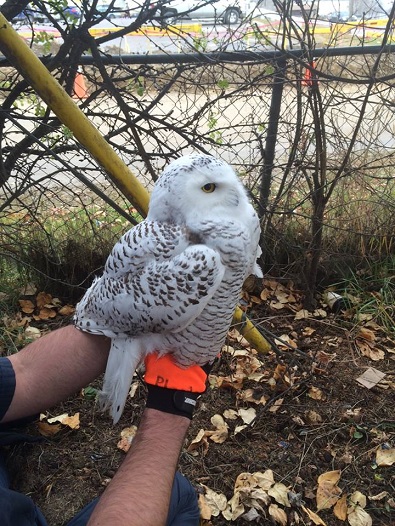The snowy owl rescued in La Ronge. Photo courtesy Facebook, Transwest Air.
A provincial authority on birds is weighing in on the recent plight of more than a dozen snowy owls.
There have been reports of about 16 snowy owls that are either extremely weak or dead – and most have been found fallen in northern Saskatchewan.
The most recent rescue was flown from La Ronge for free by Transwest Air.
While some have speculated that the summer’s wildfires are to blame for the condition of these snowy owls, Ministry of Environment Game Bird Biologist, Katherine Conkin, is busting that myth.
She says the owls spend theirs summer breeding in the northern tundra and high arctic, so they likely wouldn’t be affected by wildfires.
“It depends on the species. It depends on where they were during the fires but in this particular case, the snowy owls, the birds weren’t actually here during the forest fires season so it’s unlikely they were impacted by it,” she said.
But we won’t know for sure until lab results come back to the ministry.
Instead, she points to a lack of food supply as the likely cause of the starving, weak snowy owls.
“These birds rely on small mammals, which are fairly cyclic so they can boom and bust and the owls tend to the do the same thing. If they’ve got lots of food they do well, if they don’t have much food, they don’t do very well,”
Essentially, she says the owls haven’t had enough fuel to make the migration trip from the arctic to their southern/central Saskatchewan, and that’s why they’ve been falling in northern Saskatchewan areas.
That doesn’t mean there haven’t been birds hurt by smoke damage or flames from the summer – Conkin says the odd bird has been suffered.
But generally Conkin says the fires hit at a time when baby birds were able to fly away, and says she doesn’t think there’s been a big overall effect on wildlife.
Three of the 16 saved birds at a Meadow Lake-area rescue, Healing Haven Wildlife Rescue, are on the road to recovery. Unfortunately, most saved birds haven’t made it as they were too far gone when they made it in.
Conkin adds that if you see a bird in distress to call the nearest conservation officer. People can take special care to bag a snowy owl if they find it dead, and take it to their nearest office.
